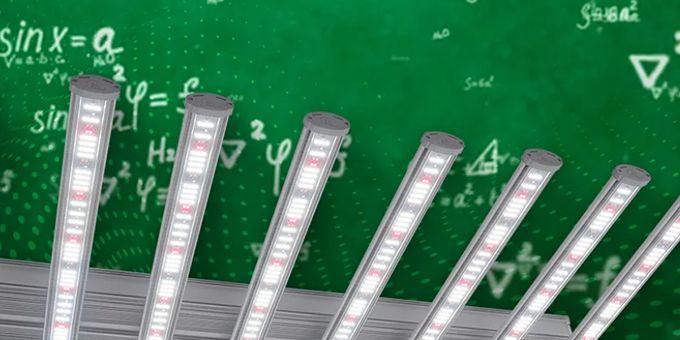In the ever-evolving landscape of LED grow lights, it's crucial to look beyond the surface when choosing. With many lighting companies and innovative horticultural LED lighting fixtures flooding the market, some resort to simplifying their products down to a single number.
 Light Spectrum vs. µmols
Light Spectrum vs. µmols

Article from | Iluminar Lighting
In the ever-evolving landscape of LED grow lights, it's crucial to look beyond the surface when choosing a new fixture. With many lighting companies and innovative horticultural LED lighting fixtures flooding the market, some resort to simplifying their products down to a single number.
Moving Beyond Photon Efficiency.
Enter the realm of Photon Efficiency, often referred to as Photosynthetic Photon Efficacy. (PPE). While the acronym may initially sound scientifically impressive, understanding the underlying concepts is key. Delve a little deeper, and you'll find that Photon Efficiency is measured in µmols per Joule (J). For those not well-versed in scientific jargon, this may evoke memories of a classroom setting, but it's an essential metric in the horticultural industry.
Unpacking Photon Efficiency.
Photon Efficiency is essentially the total light output generated by a fixture (PPF or Photosynthetic Photon Flux) measured in µmols per second, divided by the watts needed to produce that light. It's a ratio that gauges how efficiently a fixture transforms electrical power (Joules) into plant-usable light (µmols).

Not All Photons Are Equal.
As Light Intensity (PPFD) Increases, Light Spectrum Plays a Bigger Role.
The Emerson Effect.
Scientific research, notably by Robert Emerson, emphasizes the significance of multiple colors of light for optimal photosynthesis. UV and far-red light contribute to critical metabolic processes, a concept embodied in ILUMINAR Lighting's iLogic™ LED series.
It All Comes Back to PAR.
Traditional metrics like Photosynthetic Photon Flux (PPF), PPFD (incident light intensity), and Photon Efficiency all revolve around PAR. However, the definition of PAR has evolved, now including photons between 380 and 760 nanometers.
And There’s More…
New metrics like ePAR, BPF, BPFD, and BPE are emerging, broadening our understanding of biologically active light. Manufacturers adopting these terms signify a progressive approach.

The content & opinions in this article are the author’s and do not necessarily represent the views of AgriTechTomorrow
Comments (0)
This post does not have any comments. Be the first to leave a comment below.
Featured Product

